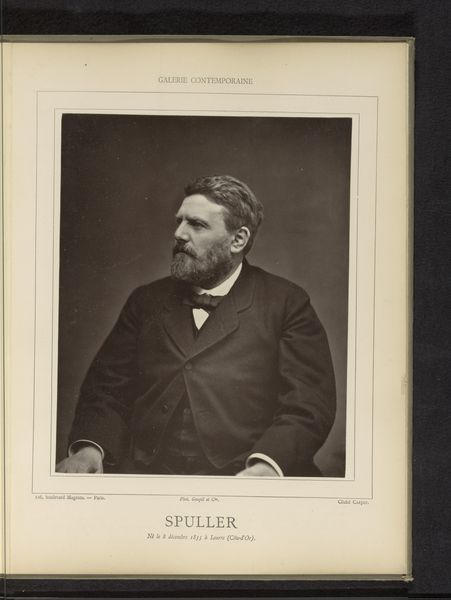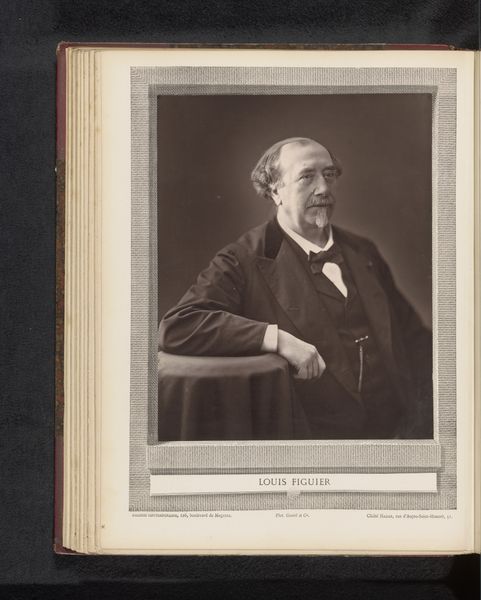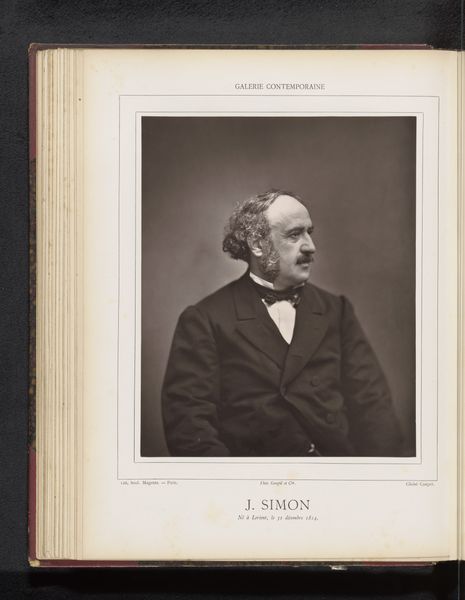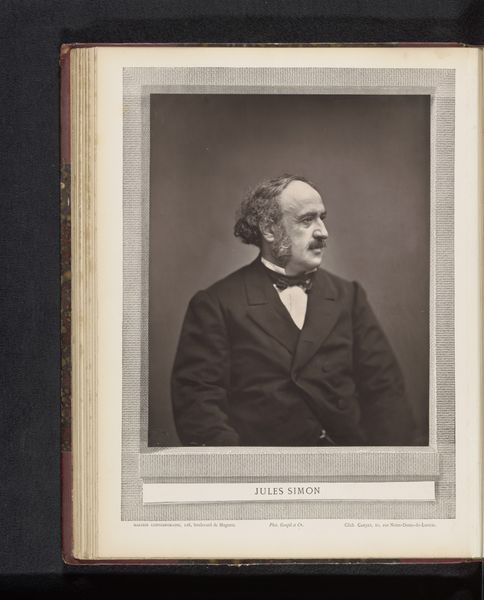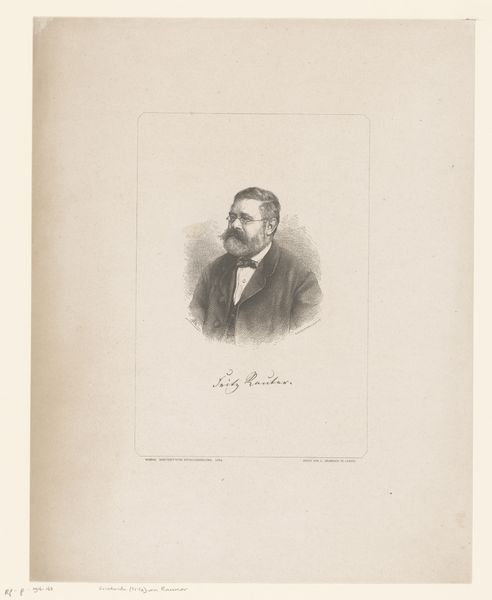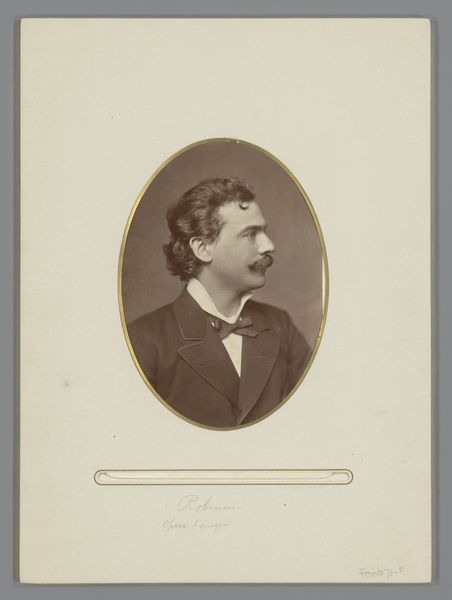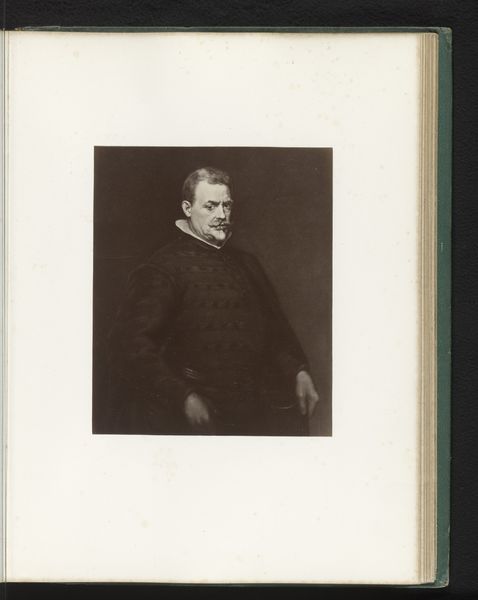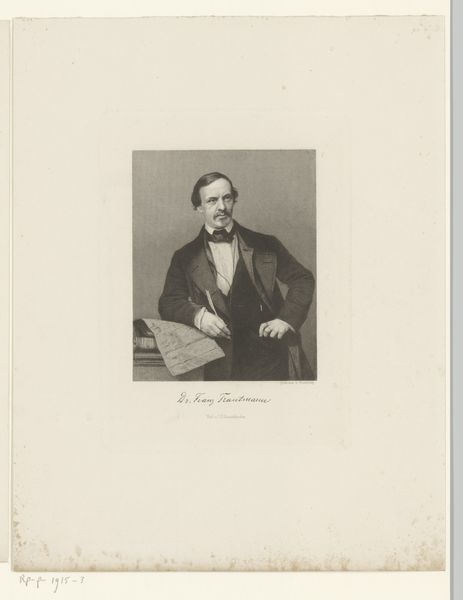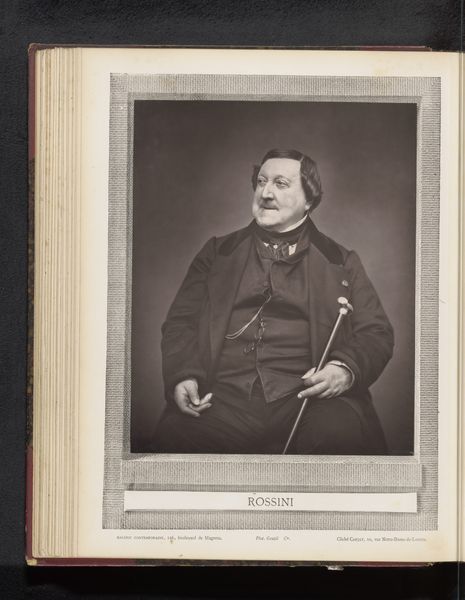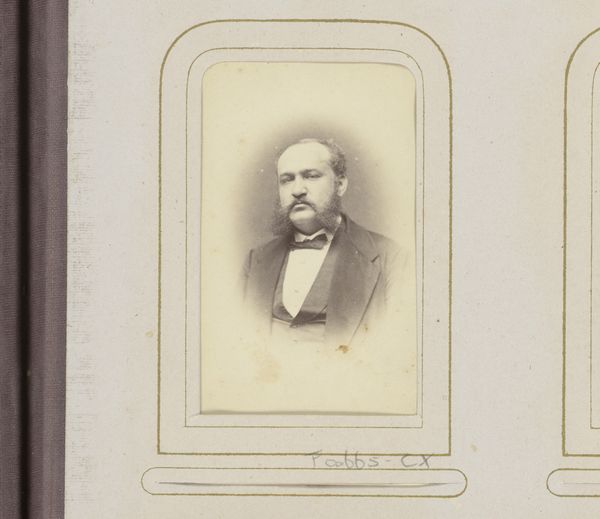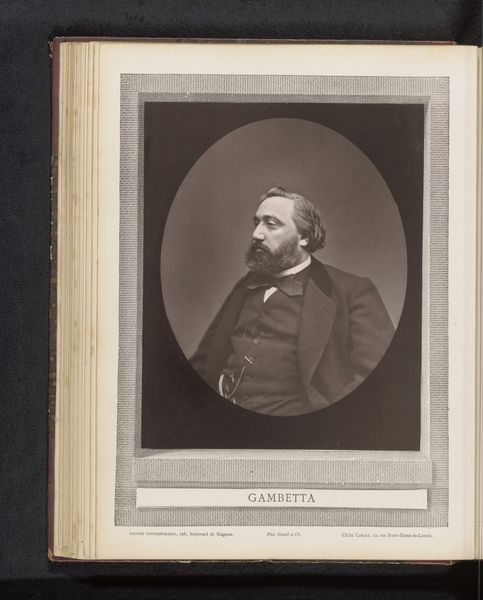
#
aged paper
#
toned paper
#
homemade paper
#
paperlike
#
paper texture
#
personal sketchbook
#
folded paper
#
golden font
#
paper medium
#
historical font
Dimensions: height 224 mm, width 179 mm
Copyright: Rijks Museum: Open Domain
Ferdinand Mulnier created this portrait of H. Scott using photography. The photograph's materiality is fundamental to understanding its cultural significance. Photography in the 19th century involved a complex interplay of chemistry, optics, and manual skill. Each print was a unique object, reflecting not only the subject's likeness but also the photographer's technical expertise and aesthetic choices. The albumen print, with its characteristic warmth and tonal range, required meticulous preparation and printing processes. Mulnier engaged with photography at a time when it was transforming from a scientific curiosity into a powerful medium for documentation and artistic expression. This new technology democratized portraiture, making it accessible to a wider segment of society, although still not all of it. Photography was tied to the rise of industrial capitalism, both as a product of technological innovation and as a tool for social and commercial purposes. The amount of labor involved in producing each photograph highlights the changing nature of work and leisure in the 19th century. Paying close attention to materials, making, and context allows us to appreciate the social and cultural meanings embedded in this photograph.
Comments
No comments
Be the first to comment and join the conversation on the ultimate creative platform.
